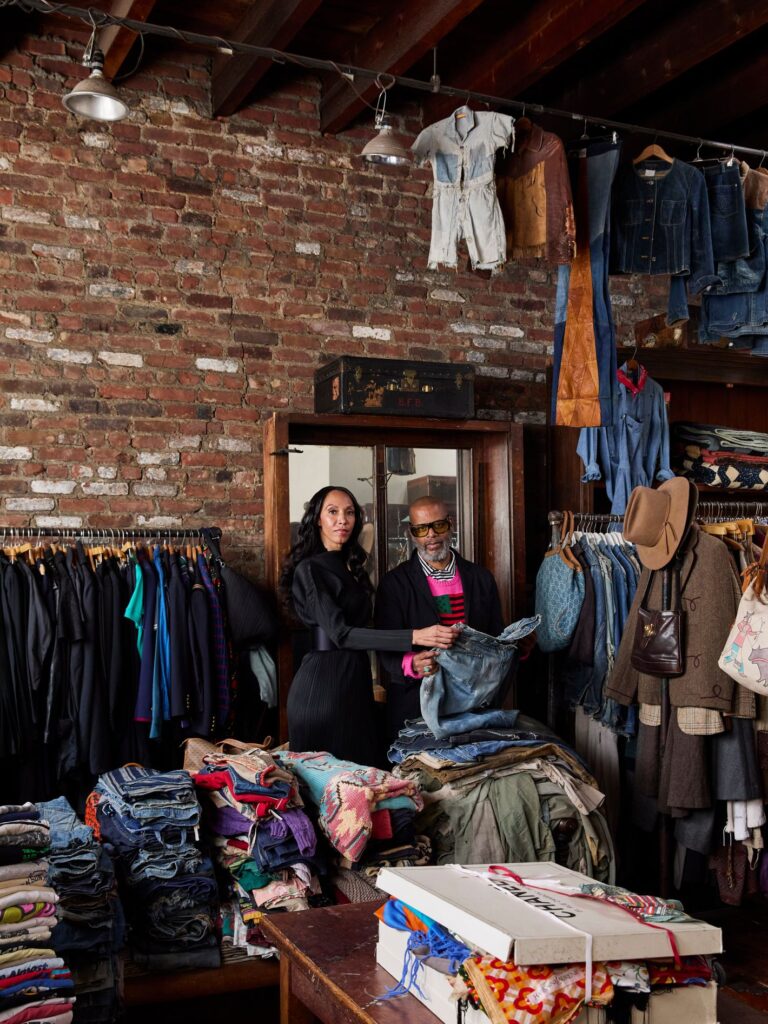Ali Richmond’s Crown Heights loft is much more than just a living space—it’s a reflection of her mission and passion for inclusivity in fashion. As the co-founder of the Fashion for All Foundation (FFA), Richmond has spent nearly 20 years cultivating a home that embodies creativity, social justice, and a higher purpose. The loft, located in Brooklyn, serves as both a personal sanctuary and a hub for her work, hosting gatherings, events, and fostering collaboration in the name of accessible fashion for all.
The Loft as a Reflection of Richmond’s Mission
From the moment you step into Ali Richmond’s loft, it becomes clear that the space is not just a home but a testament to her lifelong commitment to promoting inclusivity and equality in the fashion world. The open, airy layout of the loft serves as a metaphor for the kind of openness Richmond advocates for in her work. In an industry often criticized for its exclusivity, Richmond’s loft stands as a counterpoint—a welcoming space where everyone is invited, whether for a casual meeting, a brainstorming session, or a full-blown event.
The decor of the loft reflects Richmond’s eclectic and inclusive approach to both design and fashion. A mix of vintage furniture, bold art pieces, and global textiles creates an atmosphere of creativity and diversity. This blend of styles mirrors the mission of the Fashion for All Foundation, which seeks to break down barriers and ensure that fashion is accessible to all people, regardless of size, race, or background.
The Role of the Fashion for All Foundation
Richmond co-founded the Fashion for All Foundation with a mission to address the deep-rooted inequalities in the fashion industry. While her work focuses on promoting body positivity, racial diversity, and gender inclusivity, the FFA also emphasizes the importance of sustainable fashion practices and ethical labor. Richmond’s loft serves as the unofficial headquarters of this movement, a place where discussions about the future of fashion take place and where ideas for change are born.
The Fashion for All Foundation has made significant strides in recent years, thanks in part to Richmond’s leadership and the collaborations that have emerged within the walls of her Crown Heights loft. The space has become a gathering spot for fashion designers, activists, and industry professionals who are committed to creating a more equitable and inclusive industry.
Creating a Community-Oriented Space
One of the most striking aspects of Richmond’s loft is how it functions as a communal space. Rather than being a secluded, private residence, it has become a gathering place for like-minded individuals who are passionate about the intersection of fashion, activism, and community. The loft’s layout, with its large, open living areas and flexible furniture arrangements, allows for a variety of uses, from intimate dinners to large-scale workshops and events.
This sense of community is central to Richmond’s vision for the future of fashion. She believes that real change can only come from collaboration and collective action. By opening up her home and creating a space where people from all walks of life can come together, Richmond is fostering a sense of community that transcends the often competitive and exclusive world of fashion.
Inclusivity Through Design
Inclusivity is not just a buzzword for Ali Richmond—it’s the guiding principle behind everything she does, including the design of her loft. The space itself is designed to be welcoming and accessible, with wide hallways, adaptable furniture, and thoughtful lighting. These design choices reflect Richmond’s belief that inclusivity should be embedded in every aspect of life, from the clothes we wear to the spaces we inhabit.
This commitment to inclusivity extends to the way Richmond curates her art and decor. Throughout the loft, you’ll find works from artists of diverse backgrounds, many of whom focus on themes of identity, race, and gender. The pieces are not just decorative; they serve as conversation starters, encouraging guests to think critically about the role of art and fashion in shaping our perceptions of the world.
The Loft as a Creative Hub
Beyond its role as a living space and a community gathering spot, Richmond’s loft also functions as a creative hub. The open layout and natural light make it an ideal space for photo shoots, design meetings, and brainstorming sessions. Richmond often hosts designers and artists in the space, providing them with a place to experiment and collaborate.
The loft’s creative energy is palpable, with its walls adorned with mood boards, sketches, and textile samples. Richmond believes that creativity flourishes in environments that are both inspiring and inclusive, and her loft is a perfect example of this philosophy in action.
In addition to promoting inclusivity in fashion, Richmond is also a strong advocate for sustainability and ethical fashion practices. Her loft reflects these values through its use of vintage furniture and decor, as well as its emphasis on sustainable materials. Richmond has been vocal about the need for the fashion industry to adopt more ethical and environmentally-friendly practices, and her home serves as a model for how this can be done.
The loft’s design also reflects Richmond’s belief in the importance of slow fashion—buying fewer, higher-quality items that last longer and have a lower environmental impact. Many of the pieces in her home, from the furniture to the textiles, have been carefully selected for their craftsmanship and durability.
A Space with a Higher Purpose
Ali Richmond’s Crown Heights loft is more than just a beautiful living space—it’s a physical manifestation of her values and the work she does to promote inclusivity, sustainability, and community in the fashion world. Over the past two decades, the loft has evolved into a hub of creativity, activism, and collaboration, where ideas for a more equitable future in fashion are born and nurtured.
As the co-founder of the Fashion for All Foundation, Richmond has used her home to create a space where people from all walks of life can come together to discuss, collaborate, and create. Her loft is a testament to the power of design and space to shape not just how we live, but also how we think and work. It stands as an inspiring example of how a home can serve a higher purpose, reflecting the values of its owner and fostering positive change in the world.
No comments yet.








